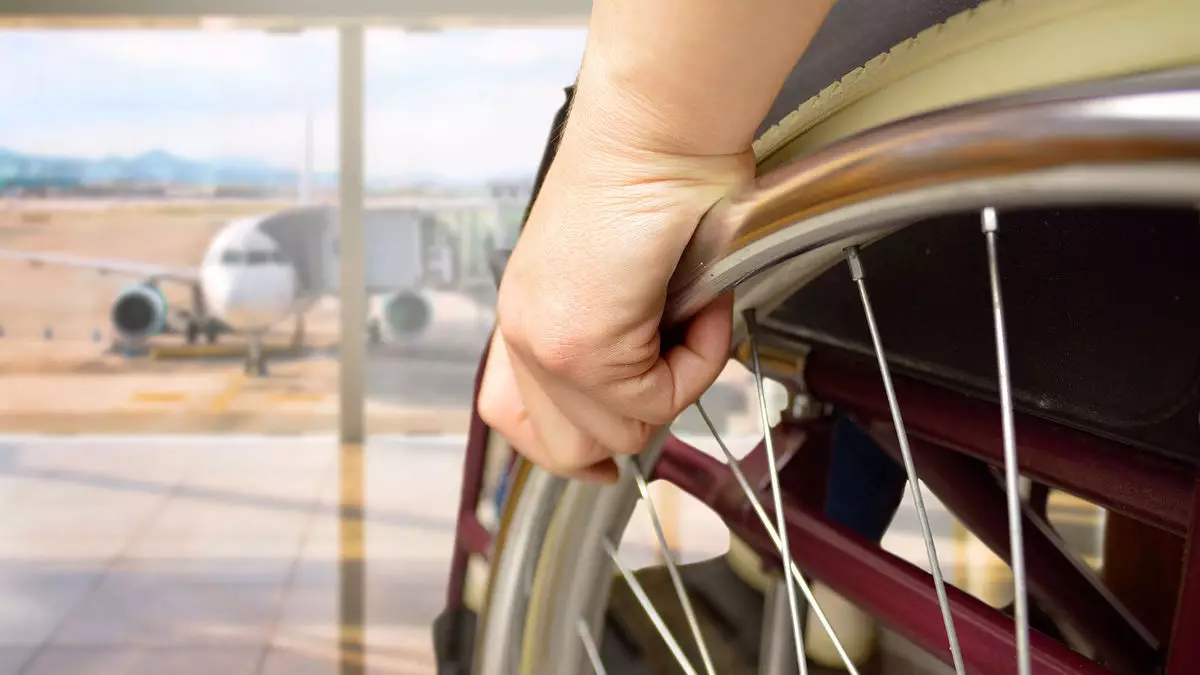Advocacy groups for the disabled community welcomed the recent passing of the FAA funding reauthorization bill, recognizing it as a significant step towards making air travel safer and more comfortable for travelers with disabilities. Angel Hardy Heinz, public policy manager for the Christopher & Dana Reeve Foundation, expressed the excitement shared by many within the community regarding the positive changes outlined in the bill. Over the years, a coalition of advocates worked tirelessly to push for these improvements, and seeing many aircraft accessibility issues addressed in the bill was indeed a reason for celebration.
Training Requirements and Evacuation Procedures
One of the key areas covered in the bill is the implementation of training requirements for workers involved in handling wheelchair stowage and assisting passengers who require wheelchair support during boarding. This move aims to ensure that airline staff are adequately equipped to provide the necessary assistance to passengers with disabilities. Additionally, the bill mandates the FAA to consider passengers with disabilities in conducting tests for establishing aircraft evacuation procedures. This is a crucial step towards enhancing the overall safety and inclusivity of air travel for individuals with disabilities.
Regulations and Guidelines for Airlines
The reauthorization bill also sets a framework for regulators to consider mandating airlines to provide a minimum of two wheelchair-accessible seats in the economy cabin. This provision is a significant win for flyers who rely on their own wheelchairs for mobility. Furthermore, the bill instructs the Department of Transportation (DOT) to develop regulations within a specified timeline, ensuring that airlines offer appropriate seating options for passengers with disabilities. This includes provisions for seating arrangements that allow companions to sit together and access to premium seating areas like bulkhead rows.
Accessibility of Passenger Portals
Another essential aspect covered in the bill is the requirement for passenger portals, such as airport kiosks and airline websites, to be accessible to individuals with varying types of disabilities, including vision impairment. This provision seeks to enhance the overall travel experience for passengers with disabilities by ensuring that essential services and information are readily available and accessible to all travelers.
John Morris, founder of the WheelchairTravel.org advocacy group, emphasized the positive impact of the accessibility measures outlined in the bill. While some of the provisions may take time to be fully implemented, they represent a step in the right direction towards addressing the needs of disabled passengers. Morris highlighted the importance of congressional action in driving these changes and ensuring that the DOT follows through on the outlined requirements.
Training Requirements and Complaint Resolution
Both Heinz and Morris underscored the significance of the training requirements for workers handling wheelchair assistance, citing instances where inadequate training resulted in issues for passengers with spinal cord injuries or paralysis. The stipulation that workers must undergo training and recertification at regular intervals sets a crucial standard for ensuring passenger safety and quality of service. Additionally, the provision mandating a timely response to accessibility-related complaints within four months addresses the need for prompt resolution of issues faced by passengers with disabilities.
Morris pointed out the importance of the FAA’s evaluation of its evacuation testing procedures as a key accessibility measure. While current regulations require aircraft to be evacuated within 90 seconds, the exclusion of individuals with disabilities and other vulnerable groups from past testing raises concerns about the effectiveness of evacuation procedures. The assessment mandated by the bill aims to address these gaps and improve the overall preparedness for emergency situations.
The provision requiring the DOT to collaborate with the industry to explore accommodations for personal wheelchairs on aircraft reflects a commitment to future advancements in accessibility. Private sector initiatives, such as the recent presentations of prototype solutions by Delta Flight Products and Collins Aerospace, demonstrate a proactive approach towards addressing the needs of passengers with disabilities. This collaborative effort between regulatory bodies and industry stakeholders holds promise for further innovations in accessible air travel.
The FAA funding reauthorization bill represents a significant milestone in enhancing accessibility and safety for air travelers with disabilities. The comprehensive measures outlined in the bill, from training requirements for airline staff to improvements in evacuation procedures, demonstrate a commitment to fostering a more inclusive and accommodating travel environment. Advocacy groups and industry partners must continue to work together to implement these changes effectively and ensure that air travel becomes a truly accessible experience for all passengers.

